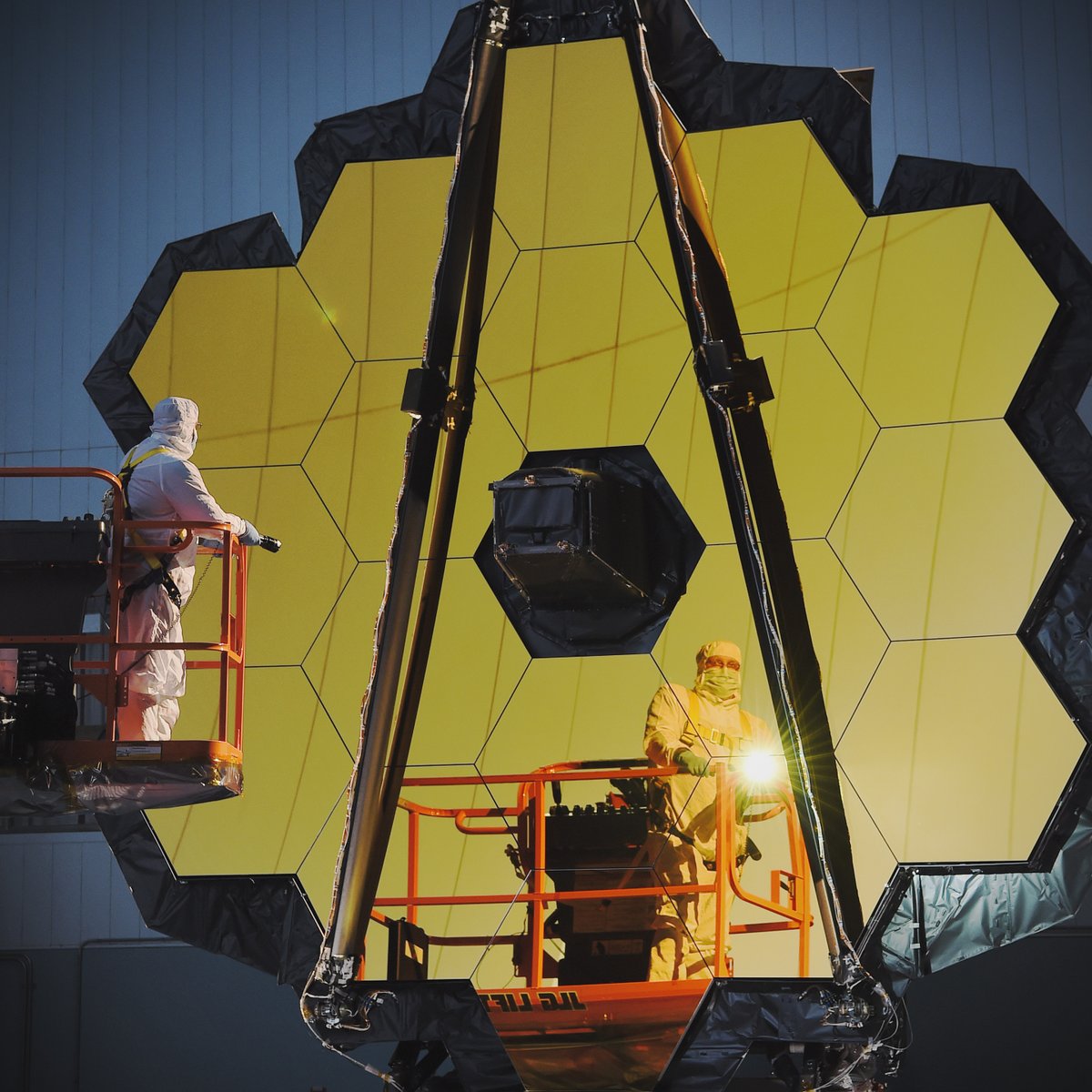In Today’s Deep Space Extra… NASA discusses factors under consideration in the reorganization of the agency’s space technology development activities with the NASA Advisory Council’s Human Exploration and Operations Subcommittee yesterday. NASA plans to discuss the status of James Webb Space Telescope (JWST) launch plans today.
Human Space Exploration
NASA weighs changes to space technology programs and organization
Space News (3/27): NASA briefed the NASA Advisory Council Monday on discussions underway inside the agency to best tailor its space technology investments to support exploration goals. One possibility would merge the technology directorate with the human exploration and operations directorate. Another would split human exploration into two organizations, one supporting low Earth orbit and the other deep space objectives. The agency intends to brief congressional oversight and appropriations panels on a strategy this summer.
A NASA astronaut stays in orbit with SpaceX and Boeing
Coalition Member in the News – Boeing
National Public Radio (3/26): NASA astronaut Sunita “Suni” Williams is one of four from the astronaut core involved in evaluations crucial to the success of NASA’s Commercial Crew Program, an initiative intended to return a human launch capability to the U.S. as this year folds into 2019. The quartet is working with NASA partners Boeing and SpaceX to qualify the CST-100 Starliner and the crewed Dragon for the commercial transport of astronauts to and from the International Space Station. The U.S. has not been able to launch astronauts since the space shuttle’s retirement in 2011.
Astronauts serve as Earth’s storytellers in National Geographic’s ‘One Strange Rock’
Collectspace.com (3/26): Eight of NASA’s space shuttle and International Space Station era astronauts serve as story tellers in the new National Geographic television series, One Strange Rock. The series, which debuted Monday night, tells the story of the Earth through the eyes of Chris Hadfield, Nicole Stott, Jeff Hoffman, Mae Jemison, Jerry Linenger, Mike Massimino, Leland Melvin and Peggy Whitson.
Space Science
NASA to provide JWST update following independent review
Spacepolicyonline.com (3/26): NASA managers have set a news media briefing for today to discuss their latest assessment on the readiness of the James Webb Space Telescope (JWST) for launch. Last fall, plans to launch in late 2018 were moved to between late March and late June in 2019 in order to complete pre-launch integration and testing of the optical and spacecraft bus components. JWST is the designated successor to the Hubble Space Telescope and intended to investigate the evolution of the earliest star systems and probe the atmospheres of extra solar planets for signs of bio markers.
About 2.3 billion years ago, a firehose of oxygen was released into the atmosphere
Universe Today (3/26): A new study led by a Princeton researcher suggests the Earth’s atmospheric oxygen emerged quickly from photosyntetic bacteria, a milestone the scientists refer to as a Great Oxidation Event.
Other News
House committee advances two space bills
Space News (3/22): The House Science Committee favorably reported bills March 22 that would recognize a NASA center as a center of excellence in rocket propulsion and would resolve a commercial space regulatory issue. The committee approved H.R. 5345, the American Leadership in Space Technology and Advanced Rocketry (ALSTAR) Act, and H.R. 5346, the Commercial Space Support Vehicle Act, on voice votes and with no opposition. “Together, the two bills help ensure that America remains competitive in space,” Rep. Lamar Smith (R-Texas), chairman of the committee, in opening comments during the brief markup session.
Nanoracks and China’s Kuang-Chi to develop near space traveler spacecraft
Coalition Member in the News – Nanoracks
GB Times of Finland (3/26): Kuang-Chi of China and Nanoracks, a Houston-based commercial space enterprise, will cooperate on a line of high altitude helium balloon missions capable of carrying passengers as well as payloads to altitudes of about 25 kilometers, or nearly 16 miles, a realm known as “near space.” Earlier, Kuang-Chi announced it has developed a crew capsule suitable for six passengers.
Confrontation or cooperation: U.S.-China space relations
The Space Review (3/26): Could it make sense for the U.S. and China to overcome Congressional prohibitions on cooperating in space? Gentoku Toyoma, a graduate student at George Washington University’s Space Policy Institute, argues “yes” in an op-ed that compares the present to the Cold War tensions that ultimately brought the U.S. and Russia into a partnership that formed a basis for the International Space Station, and perhaps collaborations on future missions to the moon and the lunar surface.
How much space junk hits Earth?
Space.com (3/27): The upcoming uncontrolled re-entry of China’s first space station, Tiangong-1, is attracting global attention. It’s not the first time for such an event. The odds of being struck by a piece of the 8 1/2 ton Chinese station are about 1 in 300 trillion, according to the report. Yet, there is a lot of manmade debris in Earth orbit, posing an impact threat to functional satellites and constantly breaking up as it re-enters the atmosphere.

